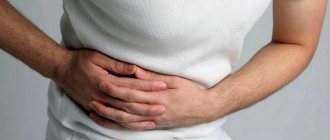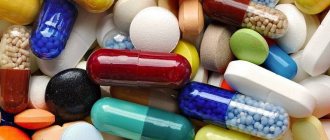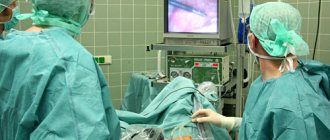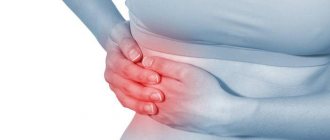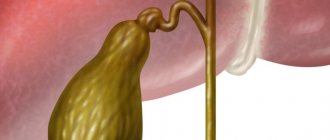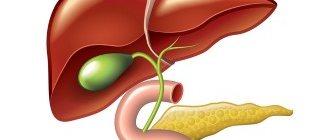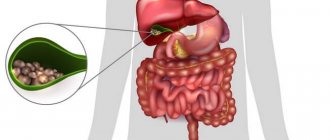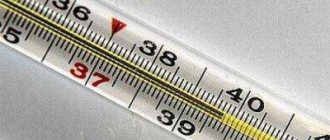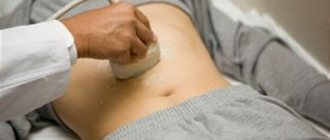Negative consequences
Modern methods of performing laparoscopy allow doctors to perform operations, after which patients recover faster than after laparotomy. But even minimal surgical intervention does not occur without consequences. After all, stones are not removed separately from the gall storage system, but also the organ itself.
Possible difficulties at an early stage
Upon completion of the operation, the doctor can diagnose complications:
- Bleeding. The condition occurs due to a violation of the integrity of the walls of blood vessels.
- Penetration of bile into the abdominal cavity. The patient experiences pain in the internal organs in the subcostal space and an increase in temperature.
- Infection of the puncture site. Accidentally introduced bacterial infections cause severe pain and lead to redness and swelling of the wound area.
- Damage to the intestinal walls. Increased pain syndrome, high body temperature are diagnosed, and in advanced stages, peritonitis is possible.
- Poorly performed drainage leads to additional complications.
The above complications occur extremely rarely and are eliminated promptly.
Deterioration of the condition in the late period
In the postoperative period, postcholecystectomy syndrome develops in 10-30% of patients. This is what experts call the complex of symptoms observed after cholecystectomy. The disease is characterized by signs:
- Abnormal stool;
- Nausea;
- Increased (37-38C) temperature;
- Excessive gas formation;
- Yellowness of the skin;
- Painful spasms of the right side with a shooting in the collarbone or shoulder;
- Weakness.
According to statistics, postcholecystectomy syndrome is detected in women at least twice as often as in men. It can occur immediately after laparoscopic cholecystectomy or over time.
Postcholecystectomy syndrome is a violation of the normal functioning of the bile ducts, subject to appropriate etiological therapy. Timely medical intervention will relieve serious consequences. The person undergoing surgery needs to remember: if painful symptoms appear, immediately consult a doctor. The doctor's opinion is law.
After the bile storage device is removed, life continues, but changes occur in the functioning of the body. A person must understand: restrictions in the food intake are inevitable, and in a certain way they heal the body. So, the intervention has occurred, let's consider the consequences.
https://youtu.be/abdoKDT1yJI
Indications for drainage in obstructive jaundice
Obstructive jaundice does not always require drainage. Depending on how much fluid is excreted by the patient’s organ and the person’s condition, specialists may resort to conservative treatment of the pathology. If complications develop or the situation worsens, doctors decide whether surgery is necessary.
The main indications for drainage in obstructive jaundice are:
- Damage to the common duct.
- Pancreatitis and cholecystitis in the acute stage.
- Purulent processes in the gallbladder.
- Tumors.
- Stone formation.
Drainage of the bile ducts in obstructive jaundice is indicated when there is a violation of the outflow of fluid from the organ, with the accumulation of a large amount of bilirubin in the human blood.
During the procedure, it is important to monitor the patient’s condition to prevent the catheter from becoming dislodged or damaged - this can lead to serious complications, leading to irreversible consequences and death of the patient.
Recovery period
Any surgical intervention is stressful for the body. It is impossible to predict the time it takes for the human body to recover. Let's discard the options when serious complications appear after the operation, let's name a certain period for recovery.
First days
Laparoscopic surgery does not cause such harm to the body as abdominal cholecystectomy. The rehabilitation stage is inevitable. After medical intervention, the patient remains in a medical facility under the supervision of doctors for at least 2 days. 24-hour care and bed rest are recommended. At this moment the patient experiences the following sensations:
- Increased gas formation, diarrhea. If you follow the recommended diet, symptoms last for two weeks.
- Pain in the area of surgical cuts. Painful sensations are relieved by taking painkillers.
- Nausea. The symptom occurs mainly in allergy sufferers and is caused by the use of anesthetics and painkillers.
- Pain in the abdominal cavity resulting from the introduction of air into the abdominal space. This condition becomes a kind of payment for minimal surgical intervention; it disappears in two weeks. At the moment of pain, it is advisable to stroke the stomach in a circular motion in a clockwise direction.
- Strong nervous excitement. Irritability goes away during rehabilitation.
After completion of the procedure, the patient requires strict bed rest. It is allowed to sit down and roll over 5 hours after the end of the operation. If your health does not cause concern, you are allowed to get out of bed and stand on your feet.
After removal of the gallbladder using the laparoscopic method, sutures remain in the abdominal cavity, which it is advisable not to wet. After two days, it is possible to wash, provided that the wound openings are protected with special bandages that are resistant to moisture penetration and make sure that they do not get lost. The sling is removed after swimming. Naturally, sanitary procedures begin after the permission of the attending physician, when the drainage is removed.
You should not eat food on the first day after the procedure. Only after 5 hours is it permissible to drink some water. The diet of the second day consists of low-fat cottage cheese or weak broth. The frequency of eating portions is at least 6 times a day, in small quantities. Mandatory daily fluid intake is 2 liters.
To make recovery happen faster, pay attention to physical activity. Even leisurely walking helps speed up regenerative processes; it should be taken into account that physical activity immediately after surgery is contraindicated.
Patients with an uncomplicated postoperative stage are usually discharged on days 1-7, and the recovery stage begins.
Actions after discharge
After discharge from the medical institution, you need to register with the medical center. The local doctor will prescribe a further course of medications and monitor the progress of recovery. Timely consultation with a doctor will help you avoid negative consequences and not die.
But the health worker will not be able to prevent complications if the patient violates the prescribed regimen. Successful rehabilitation after gallbladder removal directly depends on following the rules:
- wear a bandage;
- take food regularly, in small quantities, but often;
- regularly treat wounds;
- take medications prescribed by your local doctor;
- hard physical labor is unacceptable;
- to prevent the occurrence of pneumonia, you need to regularly do breathing exercises;
- sexual intercourse is contraindicated for the first month after cholecystectomy;
- morning exercises promote rapid recovery;
- For women, a sign to see a doctor is the following sign: menstruation did not come on time;
- drinking alcohol-containing drinks is prohibited;
- Compliance with the prescribed diet is mandatory.
When issuing a certificate of incapacity for work, the deadline is usually 10-30 calendar days. Each postoperative stage depends on the individual characteristics of a person’s metabolism. After the sick leave is closed, you cannot immediately return to normal life; a new stage begins, the body’s adaptation to the altered metabolism.
Rehabilitation of patients in hospital
While the patient is in the hospital, he should carry out the following rehabilitation measures:
- Breathing exercises for 3-5 minutes 5-8 times during the day. The patient takes 10-15 maximum deep breaths through the nose, then sharp exhalations through the mouth.
- Early activation of patients, when they are allowed to get up a few hours after laparoscopic surgery.
- Diet therapy for adaptation of the digestive organs to new working conditions. The first day requires maximum sparing of the gastrointestinal tract.
- Therapeutic exercise for rapid restoration of physical activity.
- Drug treatment: enzymes, painkillers, drugs to correct intestinal paresis.
Adaptation stage
It is worth remembering that there are no unnecessary organs in the human body. The gallbladder served as a reservoir in which concentrated bile was stored. Malfunctions of the organ bring severe pain, and removal cannot be avoided. After resection of the sac, the liver does not cease to perform its natural function. The body needs a year to recover, during which the work performed by the gallbladder will be taken over by the ducts inside the liver and the large bile duct. The specified interval must be taken into account.
Instructions for eating
After the procedure for removing the bile drive, patients, about a month later, are prescribed diet No. 5, which is mandatory for cholecystectomy. It involves following a number of rules:
- It is advisable to take meals on a schedule;
- before eating you need to drink a glass of water;
- Take food only when heated; temporarily avoid hot and cold foods;
- frequency of eating - at least 5 times a day;
- the volume of portions taken is small;
- eat stewed, boiled or steamed dishes;
- After eating, it is recommended not to bend over or lie down for 2 hours.
Permitted products include:
- dried fruits;
- milk and vegetable soups;
- fish dishes;
- chicken and beef dishes;
- bran;
- dairy products;
- fresh herbs;
- milk porridge (oatmeal, buckwheat and millet);
- dried wheat and rye bread;
- vegetable stew.
It is necessary to pay attention to the quality of products. Failure to comply with this diet leads to indigestion and serious illnesses - stomach ulcers. In this case, on the recommendation of a medical specialist, you need to take Omeprazole.
Treatment in rehabilitation places
To return the patient to a full life, after micro-surgery to remove the bile reservoir, sanatorium-resort treatment with the opportunity to swim in the pool, sunbathe, and swim in the open air is recommended. In specialized institutions, patients are offered:
- exercise therapy;
- electrophoresis using succinic acid;
- diet therapy;
- balneotherapy – baths with the addition of pine needle extract, carbon dioxide, radon;
- taking Mildronate, Riboxin.
After a set period of time, the body adapts to the absence of bile storage and people return to a full life. They name important restrictions that should not be forgotten.
Video
https://youtu.be/a05OLh-rwK8
- 4 minutes to read
Malignant neoplasms, chronic or acute forms of pathologies inevitably lead to narrowing of the bile ducts. This is a prerequisite for the occurrence of a mechanical form of jaundice, the characteristic feature of which is an increase in bile pigment (bilirubin) and intoxication. The only effective way to solve this problem is to carry out drainage in order to normalize bile outflow. Also, this is the main and only way to eliminate obstructive jaundice.
Content
The influence of the operation on the established way of life
The surgical intervention was successfully carried out, the recovery stage is completed, but how to lead a typical human lifestyle? There are limitations that cholecystectomy will introduce into a person’s daily life.
Playing sports
Only at the recovery stage there are restrictions on physical exercise. Although you should not give up sports, gymnastics with light loads will help you quickly restore normal performance. After a full month after resection of the bile duct, the following exercises are recommended:
- breathing exercises;
- a ride on the bicycle;
- walking;
- physiotherapy.
After a year, in the absence of contraindications, you can quickly return to all types of sports, even if you practice professionally and the sport involves lifting weights.
Birth of a child
Removal of a gastrointestinal tract is not a reason to give up the idea of having a child. Any woman after cholecystectomy can give birth to a healthy child. The only condition is constant monitoring by a doctor throughout pregnancy. While expecting offspring, a woman’s metabolism works at an increased rate. You must go to your doctor’s appointment according to the established schedule. Many patients complain about the return of postoperative symptoms: “like a stone inside, I lie down and it presses.”
Features of pregnancy after cholecystectomy:
- skin itching often occurs and the level of bile acids in the blood increases;
- regular intake of choleretic drugs, multivitamins, antihistamines;
- Digestive disorders occur: diarrhea, constipation; increased gas formation; heartburn; nausea;
- pregnancy often provokes the reappearance of stones;
- pain appears in the area of the right hypochondrium, with increasing pregnancy it intensifies;
- Compliance with a diet is a prerequisite for an uncomplicated pregnancy.
The procedure performed is not a prerequisite for cesarean delivery. In the absence of contraindications established by doctors, natural childbirth is permissible.
The gallbladder is not a vital organ. Its absence will not affect a person’s life expectancy and will not make significant adjustments to daily life. Without life support, you can engage in any kind of sports, even powerlifting, and women can give birth to children. Many people live with limited consumption of smoked and fried foods and feel great.
